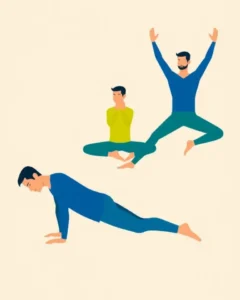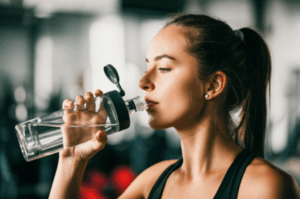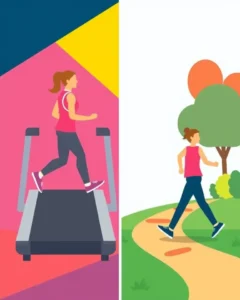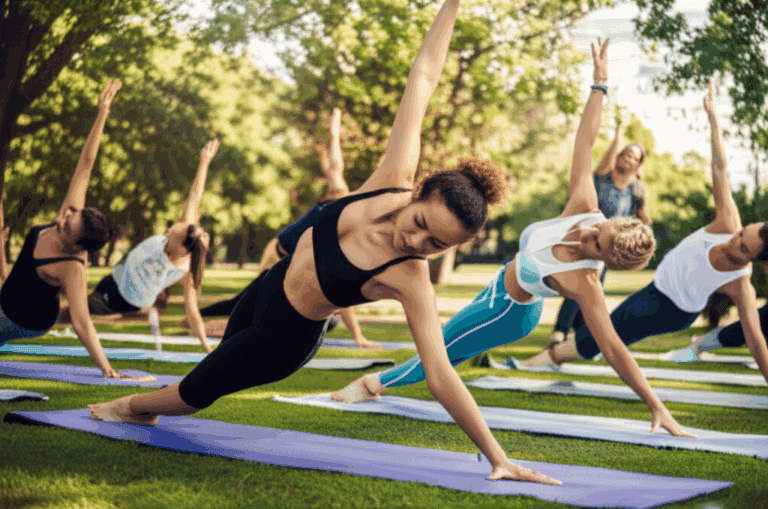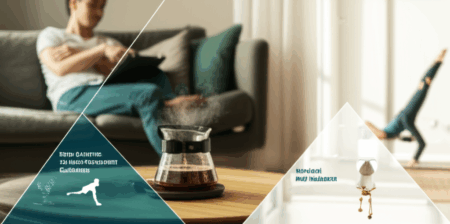For teenagers, the transition into high school marks a significant period of change, filled with academic pressures, social adjustments, and increased self-awareness. Amidst these challenges, maintaining good mental health is crucial. Exercise emerges as a powerful tool, recommended by experts and supported by research, to help young individuals navigate these turbulent waters. Let’s explore the profound impact of exercise on the mental well-being of high schoolers.
The Crucial Link Between Physical Activity and Mental Wellness
Regular physical activity isn’t just about building muscles or achieving a certain physique; it’s deeply connected to mental and emotional health. Studies show that exercise can be as effective as medication in improving mental health and happiness levels in teens. But how does it work?
The Science Behind the Mental Benefits
- Releasing Endorphins: Exercise triggers the release of endorphins, the body’s natural “happy chemicals.” These neurotransmitters act as mood elevators, reducing feelings of sadness, anxiety, and stress.
- Regulating Brain Chemicals: Physical activity positively impacts serotonin levels, a chemical that helps regulate mental health. It also stimulates norepinephrine, which improves mood and alertness.
- Reducing Cortisol: Exercise helps lower levels of cortisol, the stress hormone. By managing cortisol levels, teens can better cope with stress, reducing anxiety and improving communication skills.
Beyond the Biology: Psychosocial Advantages
The benefits extend beyond mere chemical reactions in the brain. Exercise also fosters psychosocial well-being:
- Improved Self-Esteem: Regular physical activity can boost self-esteem and self-confidence. Overcoming physical challenges and achieving fitness goals provides a sense of accomplishment and personal competence.
- Better Sleep: Exercise can improve sleep quality, which is essential for maintaining mental health. Adequate sleep helps regulate mood, improve concentration, and enhance overall well-being.
- Reduced Social Media Use: Engaging in physical activities leaves less time for social media, which has been linked to lower adolescent well-being.
- Enhanced Cognitive Function: Physical activity is associated with increased executive functioning, creativity, cognitive development, and self-regulation.
Making Exercise a Part of Daily Life
Integrating exercise into a teenager’s daily routine doesn’t have to be a daunting task. It’s about finding activities that are enjoyable and sustainable.
Practical Tips for Incorporating Movement
- Find Enjoyable Activities: Encourage teens to explore different types of physical activities to find something they genuinely enjoy. This could include sports, dancing, swimming, yoga, or even brisk walking.
- Set Realistic Goals: Start with small, achievable goals and gradually increase the intensity and duration of exercise. This approach helps prevent burnout and promotes consistency.
- Incorporate Movement into Daily Routines: Simple changes can make a big difference. Taking the stairs instead of the elevator, walking or biking to school, or doing quick exercise breaks during study sessions can add up over time.
- Make it Social: Exercising with friends or family members can provide motivation and make the experience more enjoyable. Joining a sports team or fitness class can also offer social benefits and a sense of community.
- Use Technology: Fitness apps and wearable devices can help track progress, set goals, and provide reminders to stay active. Many apps also offer guided workouts and motivational support.
Exercise at School
- Active Learning: Schools can incorporate active learning strategies, such as walking discussions, role-playing, and hands-on activities, to reinforce lesson content.
- Movement Breaks: Short, five-minute movement breaks between lessons can refresh focus and reduce fidgeting.
- Flexible Seating: Flexible seating options like standing desks and wobble cushions allow students to move while working.
- Inclusive PE: Schools can foster a culture of inclusivity by offering low-pressure movement activities and games that make physical activity less daunting for anxious individuals.
Addressing Barriers to Exercise
Despite the clear benefits, many high school students struggle to meet the recommended levels of physical activity. Understanding and addressing the common barriers is essential for promoting exercise among this age group.
Common Obstacles and Solutions
- Lack of Time: High school students often face packed schedules with academic commitments, extracurricular activities, and social obligations. Time management strategies, such as scheduling exercise like any other important appointment, can help.
- Low Confidence and Body Image Issues: Body image concerns and low self-esteem can make teens hesitant to participate in physical activities. Creating a supportive and non-judgmental environment is crucial. Focus on the enjoyment and health benefits of exercise rather than appearance.
- Social Anxiety and Bullying: Social anxiety and fear of bullying can deter teens from participating in team sports or group fitness activities. Schools can foster a culture of inclusivity and offer alternative options, such as individual sports or smaller group activities.
- Lack of Motivation: Staying motivated can be challenging, especially when faced with academic stress and other pressures. Setting realistic goals, finding enjoyable activities, and exercising with friends can help maintain motivation.
- Limited Access: Some teens may lack access to safe and affordable exercise facilities or programs. Schools and community organizations can play a role in providing accessible opportunities for physical activity.
The Role of Schools and Communities
Schools and communities play a vital role in promoting exercise and supporting the mental health of high school students.
Creating Supportive Environments
- Promoting Physical Education: Prioritizing physical education in the curriculum and offering a diverse range of activities can help engage students with varying interests and abilities.
- Providing Resources and Facilities: Ensuring access to well-equipped sports facilities, gyms, and recreational areas is essential. Schools can also partner with local organizations to offer affordable fitness programs and resources.
- Raising Awareness: Educating students, parents, and educators about the benefits of exercise for mental health can help reduce stigma and encourage participation.
- Supporting Mental Health Services: Schools should provide access to mental health professionals and resources to support students who may be struggling with anxiety, depression, or other mental health issues.
- Encouraging Active Transportation: Promoting walking and biking to school can increase physical activity levels and reduce traffic congestion.
Stories and Real-Life Examples
Hearing real-life stories can be a powerful way to illustrate the impact of exercise on mental health.
Examples:
- Sarah’s Story: Sarah, a high school freshman, struggled with anxiety and low self-esteem. She joined the school’s cross-country team, initially hesitant but determined to make a change. Over time, she found that running helped her manage her anxiety, boost her confidence, and build strong friendships.
- Michael’s Journey: Michael, a talented student, faced immense pressure to excel academically. He began experiencing symptoms of depression and found it difficult to concentrate. His guidance counselor suggested he try a martial arts class. Through martial arts, Michael not only improved his physical fitness but also learned valuable skills in discipline, focus, and stress management.
- Team Success: A high school basketball team implemented a mindfulness and meditation program alongside their regular training. The coach noticed a significant improvement in the players’ mental resilience, teamwork, and overall performance. The team went on to win the state championship, attributing their success to both physical and mental conditioning.
Conclusion
In conclusion, exercise is an indispensable component of mental health for high school students. By understanding the science-backed benefits, implementing practical strategies, and addressing common barriers, teenagers can harness the power of physical activity to enhance their emotional well-being. As educators, parents, and community members, it is our collective responsibility to create supportive environments that prioritize exercise and empower young individuals to lead healthier, happier lives.

